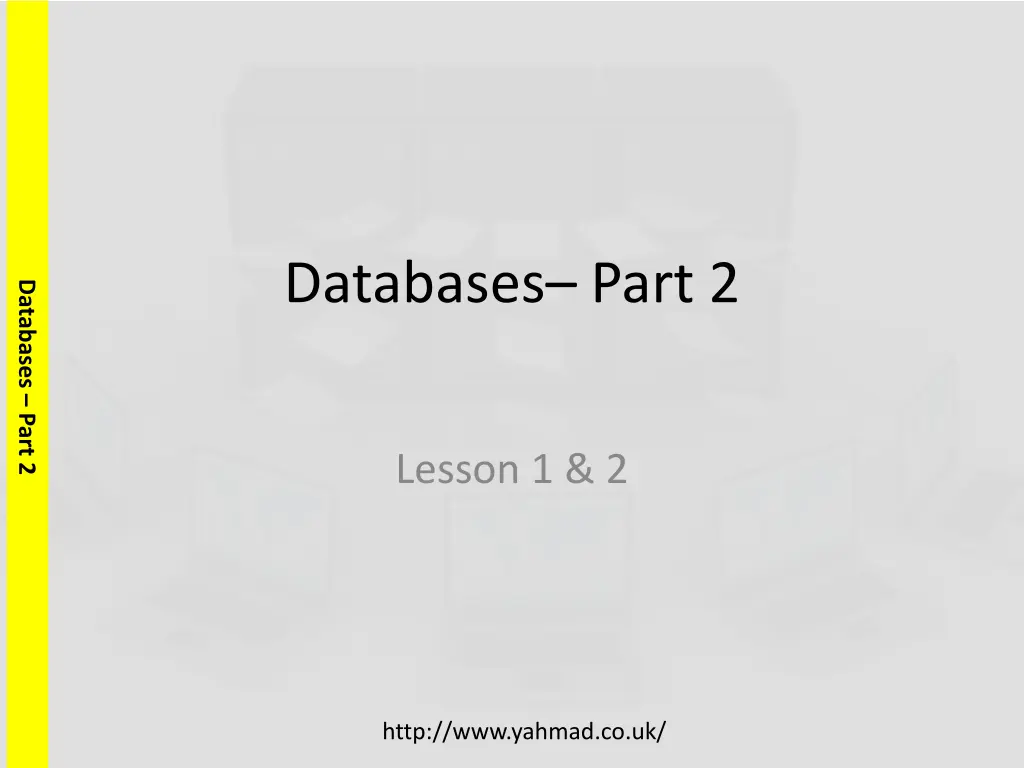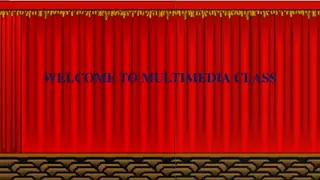
Understanding Different Types of Databases and Importing CSV Files
Learn about relational databases, flat file databases, and establishing relationships between key fields. Discover how to import CSV files into databases, create one-to-many relationships, add new records, and update existing records. Follow practical tasks to import data using Microsoft Access and set appropriate field types.
Download Presentation

Please find below an Image/Link to download the presentation.
The content on the website is provided AS IS for your information and personal use only. It may not be sold, licensed, or shared on other websites without obtaining consent from the author. If you encounter any issues during the download, it is possible that the publisher has removed the file from their server.
You are allowed to download the files provided on this website for personal or commercial use, subject to the condition that they are used lawfully. All files are the property of their respective owners.
The content on the website is provided AS IS for your information and personal use only. It may not be sold, licensed, or shared on other websites without obtaining consent from the author.
E N D
Presentation Transcript
Databases Part 2 Databases Part 2 Lesson 1 & 2 http://www.yahmad.co.uk/
Starter 1 What are Data Types? Databases Part 2 http://www.yahmad.co.uk/
Starter 2 Types of Databases? A database is information organized in such a way that a computer program can quickly select pieces of data. Databases Part 2 Flat File Database A 'flat-file' database is one that only contains a single table of data Relationship Database A 'relational' database is one that contains two or more tables of data, connected by key fields. http://www.yahmad.co.uk/
Starter 3 Relationship Databases? One to Many Relationships Teacher (Primary Key) Students (Foreign Key) The 'One' side is usually the primary key The 'Many' side is usually the foreign key Databases Part 2 A relational database has more than one table and the tables are linked using key fields. Advantages Teacher details only need to be entered once into the database. Mistakes are less likely to happen when entering data if it already exists. Avoids duplicating data. Data can be accessed using key fields (Primary and Foreign Keys). Queries and reports can be created using data (fields) from a number of tables which have a relationship. http://www.yahmad.co.uk/
Lesson Overview Objectives Understand the different types of Databases. Understand how to import CSV files into a Database. Databases Part 2 Understand how to establish relationships between key fields. Understand how to add and update records. Outcomes Time Task 1 Import the CSV File Task 2 Create One to Many Relationship Task 3 Add 10 new Records Task 4 Update Records http://www.yahmad.co.uk/
Task 1 Import CSV Microsoft Access: A comma-separated values (CSV) file stores tabular data (numbers and text) in plain-text form. You have to import the BookTable, Shops and Author. Databases Part 2 1. Click on External Data >>From File >> Text File 2. Browse for the CSV File and then click OK to proceed. 3. Check the date format (DMY) and apply appropriate field types. 4. Select appropriate primary key for each table. http://www.yahmad.co.uk/
Task 1 Import CSV (Data Types) Book Table Shops Authors Field Data Field Data Field Data BookID Number Shop Code Text Author Code Text Databases Part 2 Book Name Text Shop Name Text Author Name Text Author_ID Text Online Boolean Y/N Nationality Text Genre Text Headquarters Text DOB Date/Time Shop Text Owner Text University Text Current Stock Number Sale Boolean Y/N Sold Number Key Fields (Primary) Import as Double then change to currency (2dp) in design View. Price Currency Key Fields (Foreign) http://www.yahmad.co.uk/
Task 2 - Relationships Creating one to many relationships 1) Click on Database tools and then relationships. 2) Add all tables 3) Establish Relationships using the key fields Databases Part 2 Author Code (P) >> Author_ID (F) Shop Code (P) >> Shop (F) Click all boxes. http://www.yahmad.co.uk/
Task 3 Adding Records 1. Add new author record to the Author Table. Author Code Author Name Nationality DOB University 08/10/1943 Ohio State University RL222 Robert Lawrence Stine American Databases Part 2 2. Add 10 news records to the book Table. Book Name Author_ID RL222 Genre Horror Shop abe123 Current Stock 5 Sale Yes Sold 4 Price 5.50 Red Rain pow554 12 No 5 4.50 Monster Blood RL222 Horror vin343 17 Yes 3 6.50 The Haunted Mask RL222 Horror abe123 3 Yes 4 4.50 The Werewolf of Fever Swamp RL222 Horror Horror pow554 33 No 3 4.70 The Secret Bedroom RL222 Horror vin343 21 No 3 3.50 Let's Get Invisible RL222 Horror abe123 16 Yes 5 6.50 My Hairiest Adventure RL222 Horror bam555 19 Yes 1 4.50 Ghost Beach RL222 Horror pow554 33 No 4 5.50 Creep from the Deep RL222 Horror vin343 23 No 2 4.50 The Curse Of The Mummy's Tomb RL222 http://www.yahmad.co.uk/
Task 4 Updating Records Update the following Stock Levels: The Hunger Games 11 Harry Potter And The Chamber Of Secrets 9 The Rule of Thoughts 5 Year of the Jungle - 17 Harry Potter and the Deathly Hallows 7 The Lost Hero 3 Harry Potter and the Half-Blood Prince - 13 The Titan's Curse 15 The Fall of Arthur - 13 Databases Part 2 Update the following Prices: The Heroes of Olympus - 5.75 The Fault in Our Stars - 3.75 The Rule of Thoughts - 4.75 The Eye of Minds - 5.75 Extension: Add 10 additional books from the authors listed in the authors table. You can make up the information for some of the records (price, stock level etc). http://www.yahmad.co.uk/
Plenary Refer to the Lesson Objectives Objectives Understand the different types of Databases. Understand how to import CSV files into a Database. Databases Part 2 Understand how to establish relationships between key fields. Understand how to add and update records. Plenary Task (Q&A) Peer Assess each others work and suggest possible improvements. Discuss the levels pupils have achieved for this task. http://www.yahmad.co.uk/






















